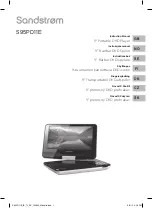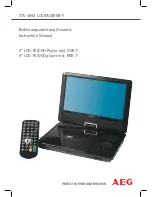
Not for
Reproduction
EN15
Storage
Storage
If storing the unit for more than 30 days, use the following
guidelines to prepare it for storage.
Long Term Storage Instructions
1. Clean the generator as outlined in
Cleaning
.
2. Change engine oil while engine is still warm, drain oil
from crankcase. Refill with recommended grade. See
Changing Engine Oil
.
3. Treat or drain fuel from generator as fuel can become
stale when stored over 30 days.
Stale fuel causes acid and gum deposits to form in the fuel
system or on essential carburetor parts. To keep fuel fresh,
use Briggs & Stratton® Advanced Formula Fuel Treatment
& Stabilizer, available wherever Briggs & Stratton genuine
service parts are sold. See
Common Service Parts.
There is no need to drain gasoline from the engine if a
fuel stabilizer is added according to instructions. Run the
engine for 2 minutes to circulate the stabilizer throughout
the fuel system before storage.
If gasoline in the engine has not been treated with a fuel
stabilizer, it must be drained into an approved container.
Run the engine until it stops from lack of fuel. The use of a
fuel stabilizer in the storage container is recommended to
maintain freshness.
WARNING!
Fuel and its vapors are extremely
flammable and explosive which could cause
burns, fire or explosion resulting in death or
serious injury.
• When storing fuel or equipment with fuel in tank, store
away from furnaces, stoves, water heaters, clothes dryers
or other appliances that have pilot light or other ignition
source because they could ignite fuel vapors.
• When draining fuel, turn generator engine off and let it
cool at least 2 minutes before removing fuel cap. Loosen
cap slowly to relieve pressure in tank. Drain fuel tank
outdoors. Keep fuel away from sparks, open flames, pilot
lights, heat, and other ignition sources.
• Check fuel lines, tank, cap and fittings frequently for
cracks or leaks. Replace if necessary.
4. Plug charger into battery charger jack and a 120 Volt
AC wall receptacle.
NOTICE
The charger will not overcharge the battery
when plugged in for an extended period of time.
5. Store generator in clean, dry area and cover with a
suitable protective cover that does not retain moisture.
WARNING!
Storage covers could cause a fire
resulting in death or serious injury.
• Do not place a storage cover over a hot generator. Let
equipment cool for a sufficient time before placing the
cover on the equipment.
FCC Part 15 Information to User
Pursuant to part 15.21 of the FCC Rules, you are cautioned
that changes or modifications to transceiver not expressly
approved by Briggs & Stratton could void your authority to
operate the portable generator.
This device complies with part 15 of the FCC Rules.
Operation is subject to the following two conditions: (1)
This device may not cause harmful interference, and
(2) this device must accept any interference received,
including interference that may cause undesired operation.
This equipment has been tested and found to comply with
the limits for a Class B digital device, pursuant to part 15
of the FCC Rules. These limits are designed to provide
reasonable protection against harmful interference in a
residential installation. This equipment generates, uses
and can radiate radio frequency energy and, if not installed
and used in accordance with the instructions, may cause
harmful interference to radio communications. However,
there is no guarantee that interference will not occur in a
particular installation. If this equipment does cause harmful
interference to radio or television reception, which can be
determined by turning the equipment off and on, the user
is encouraged to try to correct the interference by one or
more of the following measures:
• Reorient or relocate the receiving antenna.
• Increase the separation between the equipment and
receiver.
• Connect the equipment into an outlet on a circuit
different from that to which the receiver is connected.
• Consult the dealer or an experienced radio/TV
technician for help.
IC Information to User
This device complies with Industry Canada’s licence-
exempt RSSs. Operation is subject to the following two
conditions:
(1) This device may not cause interference; and
(2) This device must accept any interference, including
interference that may cause undesired operation of the
device.
















































